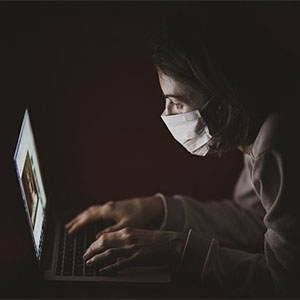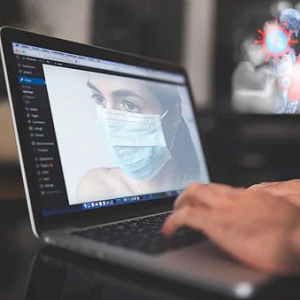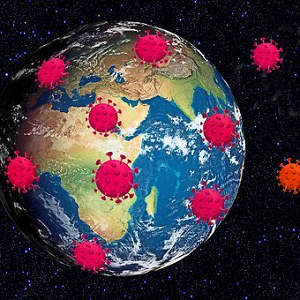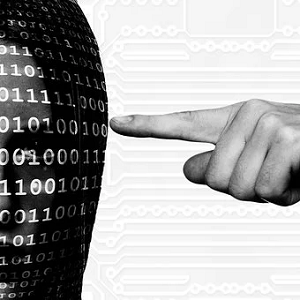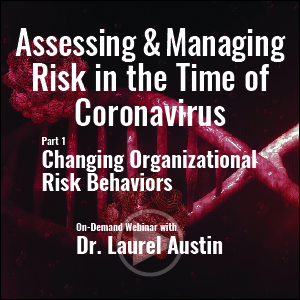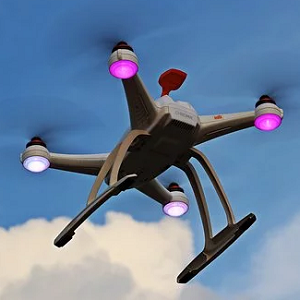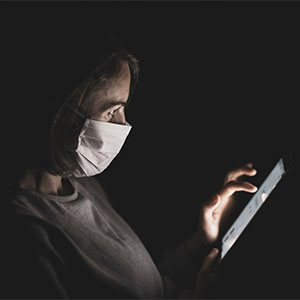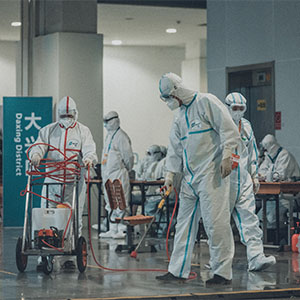COVID-19 through the Business Technology Lens
Whether in an “essential” or “non-essential” position, your workplace is likely quite different today than it was just weeks ago. Teams are not just distributed on three different continents, they’re spread across a large number of individual home offices, bedrooms, and kitchen tables, making collaboration processes and tools even more critical. Belt-tightening measures are the norm. And people are scared — for their jobs, their families, the global economy, and, quite literally, for their lives.
Here you’ll find a collection of articles the experts at Cutter Consortium have been writing to help you make sense of the business technology impact of COVID-19. We’ve also reached back into the Cutter archives to compile a collection of research items that offer context and contain advice on preparing for and dealing with pandemics and other catastrophic events.
There are two types of data involving COVID-19: primary data and secondary data. As we explore in this Advisor, primary data relates directly to the pandemic and measures outcomes.
Kaushik Dutta and Arindam Ray
June 17, 2020
We are now well into the depths of dealing with the current situation. In assessing performance in the face of uncertainty, have you identified and inventoried the capabilities, including ones that you barely knew existed within the depths of your enterprise? Can you use this learning to build a more Covidian architecture that will withstand future assaults that could be worse than the one we have been going through?
Balaji Prasad
May 20, 2020
In this Advisor, Rich Huebner shares some of his thoughts about how the COVID-19 pandemic is going to fundamentally change the education industry, in particular, and offer some lessons learned for other industries as well.
Rich Huebner
May 7, 2020
As a result of the pandemic, we are witnessing increasing interest by organizations for utilizing natural language processing and speech recognition solutions targeted at customer engagement and support — particularly in the form of smartbots, intelligent assistants, conversational computing, and other applications designed to automate customer requests and assist human agents with contact/call center operations. In this Advisor, we examine some of the types of NLP and speech solutions available to organizations and consider some of the issues to keep in mind when it comes to employing such offerings.
Curt Hall
May 4, 2020
As of this writing, we have no firm idea of the human and economic toll to expect from the COVID-19 pandemic or how long painful countermeasures will be necessary. A crisis? For sure. Let’s not waste it; let’s learn from it. Our forced adaptation to a totally unfamiliar world can and should cause us to critically examine assumptions about how we live and work and conduct business. There is a broad spectrum of possibilities, but this Advisor focuses on where IT plays a major role.
Paul Clermont
April 30, 2020
For this Advisor, we analyzed reports from around the globe to point to dramatic changes in how leaders are making decisions to respond to the crisis of COVID-19. We expect that some of these changes are likely to become part of the “next normal” for decision making in complex environments.
Paidi O'Raghallaigh and Frederic Adam
April 30, 2020
“How can I tell that they’re working if I can’t see them?” It is a common complaint, based on a centuries-old style of working that we now need to move past. My rejoinder usually is, “When you CAN see them, how do you know they’re not shopping Amazon or playing solitaire?” But, in the days of unplanned, unusual work from home (WFH), this question deserves a closer look. In this Advisor, I’ll make use of decades of remote working, and managing remote workers, in the IT industry, but these same principles apply to many kinds of work.
Tom Bragg
April 23, 2020
“MiPasa” is an important new blockchain project to assist healthcare providers, government health agencies, public health departments, universities, and other organizations manage and analyze COVID-19 data. MiPasa is a collaboration between many of the world's major health organizations, tech companies, and research institutions to build a blockchain-based, open, “global-scale control and communication system” to facilitate fast and early detection of COVID-19 carriers and infection hotspots via accelerated information sharing among individuals, authorities, and health institutions.
Curt Hall
April 21, 2020
In this report, you'll find interviews, conducted by several partners from Arthur D. Little, with 25 CEOs from Hong-Kong, Singapore, and Italy who shared how they’ve been responding to the COVID-19 crisis. All represent firms that operate critical infrastructures in their respective countries. Their advice is very valuable to CxOs in all industries across the globe.
Rick Eagar, Tom Teixeira, Karim Taga, and Saverio Caldani
April 20, 2020
As the world comes to terms with this "new normal," it is easy to resort to a mindset of how things will be materially different following this worldwide management and, ultimately, recovery from a significant disruption in how we live our lives. As executive technology leaders, we have a choice to make about how we react to this disruption and how we prepare for future disruptions from a data and digital technology standpoint.
Gustav Toppenberg
April 16, 2020
Hospitals, government agencies, and other organizations are struggling with process management and information processing issues that have been compounded by the novel coronavirus pandemic. They are turning to RPA and AI-based solutions — including smartbots and intelligent virtual assistants — to attempt to mitigate such concerns. From a market perspective, industry providers are moving rapidly to meet their needs, including offering solutions that hospitals and other organizations responding to the contagion can license for free. This Advisor explores some of the trends we are seeing to address these concerns.
Curt Hall
April 7, 2020
In light of the current, unprecedented global crisis, it’s crucial now more than ever to reevaluate your risk management process and ensure you are well prepared for what may lie ahead. Today’s executives must adapt their leadership and face the current crisis head-on with a proactive approach to risk management.
Tom Teixeira
April 7, 2020
Although the technology for remote working (collaborative) has been around for 30 years, the adoption rate has been slow but steady. Now, all of a sudden, the adoption rate has shot up to almost 100%, as just about all nonessential industries are working remotely to help flatten the COVID-19 infection curve. This rapid adoption of remote working technologies has had a number of challenges.
David Coleman
April 2, 2020
Emerging blockchain distributed ledger technology solutions (DLT), combined with fast COVID-19 cloud-based testing procedures and patient onboarding with real-time monitoring solutions, are key to integrating and creating a COVID-19 digital healthcare system. An end-to-end COVID-19 patient management system can use digital technologies to identify, isolate, and manage patients, alleviating the overloading of hospitals and stress on resources.
Claudio Lima
April 2, 2020
COVID-19 has already had a massive impact on all our lives and is on track to continue doing so for some time. In this situation, technology is playing an increasing role in moving life and business forward. This will all have long-term, and potentially positive, impacts on society and how we run our lives.
Kaushik Dutta
April 1, 2020
The COVID-19 outbreak is forcing executives, managers, policy makers, and the rank-and-file within organizations worldwide to quickly assess the risks they face and make business- and life-impacting decisions. Drawing on relevant examples from other domains, Dr. Laurel Austin helps you better understand how to assess and manage the risks your organization faces as you are called upon to issue guidelines, adjust strategies, and rethink plans up and down the organization due to coronavirus concerns.
Laurel Austin
April 1, 2020
We all are now experiencing a major unprecedented and unexpected crisis caused by the ongoing coronavirus pandemic. The situation we’re facing now is unseen previously, unanticipated, and unimaginable. Any help that we can enlist to emerge from this unprecedented crisis — and other potential crises we may encounter in the future — is worth pursuing. In this Advisor, let’s explore how autonomous technology can be employed in key areas to control and manage emergencies we face now.
San Murugesan
March 31, 2020
I don’t have to tell you about the impact of the coronavirus — you are feeling it. While we are all negatively affected personally, businesses are experiencing a spectrum of effects. Some are seeing an explosion of their e-commerce activities. Others are watching their business collapse as activities at all points in their supply chain slow down. Much has been written about dealing with explosive growth, so let’s focus on the downside case. This is where organizations show their true character.
Lou Mazzucchelli
March 26, 2020
Our role as software architects is, first and foremost, to stay in our lane; we are not epidemiologists and should not share our opinions about the right course of action for anyone other than ourselves. The resulting, emergent, unpredictable result of these millions of decisions will shape our future for a long time to come.
Barry M. O'Reilly
March 25, 2020
The COVID-19 outbreak is forcing executives, managers, policy makers, and the rank-and-file within organizations worldwide to quickly assess the risks they face and make business- and life-impacting decisions. In Part 1 of this two-part webinar series, Dr. Laurel Austin reviews how we manage risk and explores practices we need to employ to help us overcome common errors in how people perceive, assess, and react to risks they face.
Laurel Austin
March 25, 2020
As the novel coronavirus contagion rages, governments and commercial enterprises are utilizing blockchain to better manage the disease and mitigate its impact. This Advisor explores how the pandemic is driving the use of blockchain technology across the globe.
Curt Hall
March 24, 2020
With announcements on two regulations, one addressing the certification of unmanned aircraft and the other the certification of carriers using drones for delivery, the FAA revealed the regulatory framework that accommodates commercial package delivery by drones.
Helen Pukszta
March 19, 2020
Michael Gleeson discusses how public health agencies and emergency managers can leverage the digitization of contact tracing of airline passengers at risk from a biological outbreak. He outlines the increased risk of infection and spread, facilitated by the increased numbers of airline passengers globally. A global framework to prepare for and respond to a biological threat, natural or otherwise, spread via air travel, can be achieved through the digitization of contact tracing using a collaborative approach among the airline industry, public health agencies, and EM practitioners. Identifying and locating at-risk passengers in a fast and efficient manner is paramount to limiting contagion spread.
Michael Gleeson
July 2019
As all of this disaster swirls around us, I suggest that the organizations that truly stand to benefit are those that create a sense of “safe haven” at the office. We should be the ones trumpeting good news and highlighting the positive strokes in the world around us. Rather than allowing our organizations to fall prey to the 24-hour news cycle, we should seriously consider reinforcing good news for our staff, our customers, and ourselves.
Carl Pritchard
October 2014
Having a lot of information and expertise available does not readily translate to front-line workers being able to utilize it efficiently. Rather, the transfer of domain-specific information and knowledge to front-line operations requires training and for processes and procedures to be put in place (well in advance!), if there is to be a reasonable expectation that workers will be able to handle exceptional events taking place in complex environments.
Curt Hall
October 2014
Th[e H1N1] pandemic has shown many weaknesses in the production and distribution of vaccines as well as the communication of the risks involved. Robert Charette reviews the timeline and lessons learned in a low-lethality flu situation, so perhaps they be applied the next time a big bet has to be made. He says, “We may not be so lucky then.”
Robert N. Charette
November 2009
“We learn from history that we learn nothing from history,” or so wrote Irish playwright George Bernard Shaw in The Revolutionist's Handbook. The swine flu pandemic gives us an opportunity in real time to see how accurate Shaw's observation is in practice, especially in regard to “near misses.”
Robert N. Charette
July 2009
Writes Robert N. Charette, poor risk communication on the part of health officials has become one of the major risk management-related issues emerging so far in this [H1N1] affair. The WHO approach indicates a pandemic's risk likelihood but not its consequences.
Robert N. Charette
May 2009
Business continuity is a business survival strategy for an organization. Executive managers who fail to take action to protect their organization will be held accountable by the shareholders, strategic business partners, regulatory authorities, or other interested parties. This Executive Report focuses on the business continuity development process. A strong business continuity environment provides assurance to the organization's executive management that in the event of a disaster the company is in a superior position to survive.
Ken Doughty
December 2007
Constant pronouncements by government officials or scientists that individuals and organizations need to prepare for a pandemic may not help, either. As the public becomes comfortable with the notion of a pandemic occurring, public health officials' calls for preparation can have the opposite affect, appearing to listeners as either being shrill Chicken Little “the sky is falling” announcements or as self-serving “hype” to get attention — and financial resources — for their personal research efforts.
Robert N. Charette
March 2007
You need to understand the specific issues involved and what you plan to do during and after the pandemic hits. For example, read the US Department of Health and Human Services draft
Pandemic Influenza Response and Preparedness Plan as well as the
WHO site on influenza. Area quarantines and travel restrictions are high in the list of actions considered to keep a pandemic from spreading.
Another good site describes the 1918 pandemic — it will give an idea of what we may be in store for. Also, note that pandemics normally come in two waves — the second about 6 to 9 months after the first. This means that your BCM plan will need to span about 18 months of activities.
Robert N. Charette
April 2004
Despite the obvious attention focused on the need for robust business continuity plans due to the [9/11] attacks, many organizations haven't followed through with the vigorous BCP efforts that were widely predicted.
Dave Higgins
December 2002
BCP/contingency management is a process that reduces the likelihood of a service interruption and provides documentation for the recovery of services that support critical customer business functions. The primary objective of any business resumption plan is to enable an organization to survive a disaster and to reestablish normal business operations.
Craig McComb
June 2002
